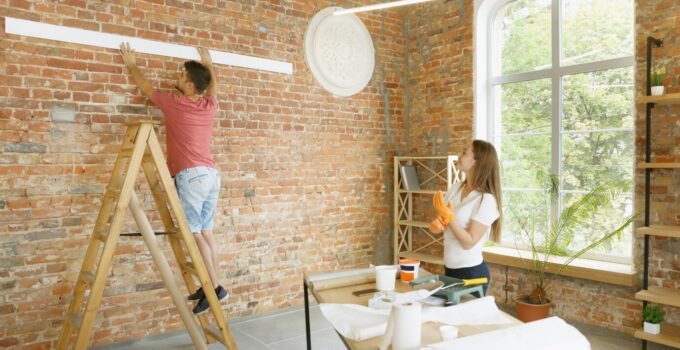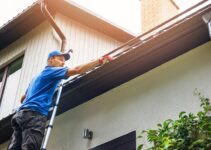Taking on a DIY project at home can be a rewarding and cost-effective way to improve your living space. Whether you’re installing shelves, fixing a leaky faucet, or tackling a major renovation, having the right tools and safety equipment is crucial.
In this guide, we’ll cover essential safety tips, the tools you’ll need, and why protective gear like prescription safety glasses online is a must-have for any DIY enthusiast.
Page Contents
Why DIY Projects Are Worth the Effort
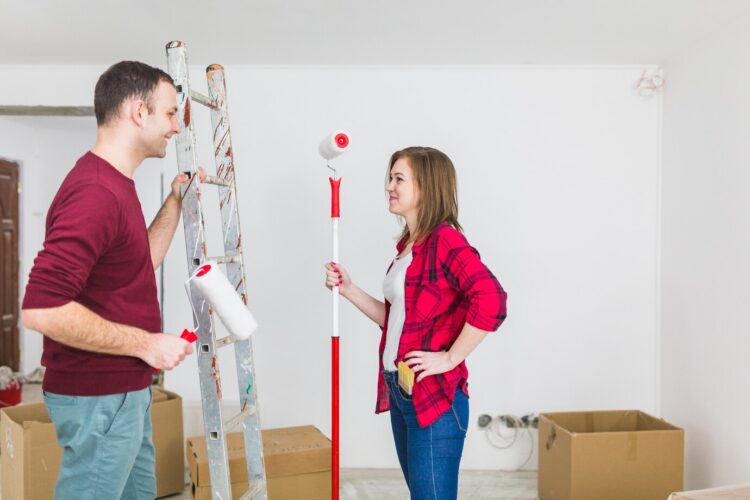
Source:freepik.com
DIY home improvement projects allow homeowners to personalize their space while saving money on labor costs. Some of the key benefits include:
- Cost Savings: Professional labor can be expensive, and by doing it yourself, you can significantly reduce expenses.
- Skill Development: Learning to fix and build things can be incredibly rewarding and useful for future projects.
- Customization: DIY allows for a personal touch that you might not get with store-bought or contractor-installed options.
- Increased Home Value: Well-executed projects can enhance the overall value of your property.
Essential DIY Safety Tips
Before you jump into your next project, it’s important to consider safety measures to prevent injuries and accidents. Here are some crucial safety tips:
Wear Proper Safety Gear
DIY work often involves exposure to dust, debris, and sharp objects. Protective gear should include:
- Safety Glasses: If you wear prescription glasses, consider investing in prescription safety glasses online to ensure both clear vision and eye protection.
- Gloves: Protect your hands from cuts, splinters, and harsh chemicals.
- Ear Protection: If using loud tools like saws or drills, earplugs or earmuffs are essential.
- Dust Mask or Respirator: Prevent inhaling harmful dust and fumes.
Use the right tool
Having the right tools for the job can make your work more efficient and safer. Essential DIY tools include:
- Hammer and Nails: A staple for any home project.
- Screwdrivers and Drill: Necessary for assembling furniture and securing fixtures.
- Tape Measure and Level: Ensures accuracy in measurements and installation.
- Utility Knife: Useful for cutting various materials like drywall and plastic.
- Saw and Sandpaper: For woodworking and finishing surfaces smoothly.
Keep Your Workspace Clean
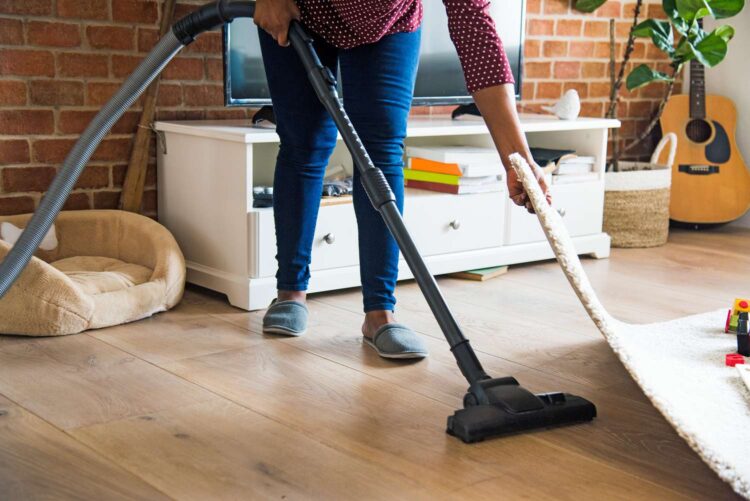
Source: marthastewart.com
A cluttered workspace can lead to accidents. To maintain a safe environment:
- Keep floors clear of debris and tools to avoid tripping hazards.
- Store tools properly when not in use.
- Dispose of waste materials responsibly.
- Know When to Call a Professional
While DIY projects can be fun, some tasks require professional expertise. Consider hiring a contractor for:
- Electrical work beyond basic wiring.
- Plumbing projects involving major pipe replacements.
- Structural changes that could compromise home integrity.
- Roofing repairs that pose fall risks.
Popular DIY Projects and How to Do Them Safely
Installing Floating Shelves
Floating shelves are a great way to add storage and aesthetic appeal to a room. To do it safely:
- Use a Stud Finder: Secure shelves to studs to ensure they hold weight.
- Wear Eye Protection: Drilling into walls can create flying debris.
- Level Your Shelf: A crooked shelf will look unprofessional and be less stable.
- Replacing a Light Fixture
Changing light fixtures is an easy way to update a room’s look. When doing this yourself:
- Turn Off Power: Always switch off the breaker before working with electrical wires.
- Use a Voltage Tester: Confirm that no electricity is running through the wires.
- Secure the Fixture Properly: Loose wiring can lead to malfunctions or fire hazards.
- Painting a Room
Painting is one of the simplest DIY home projects with a big impact. Safety tips include:
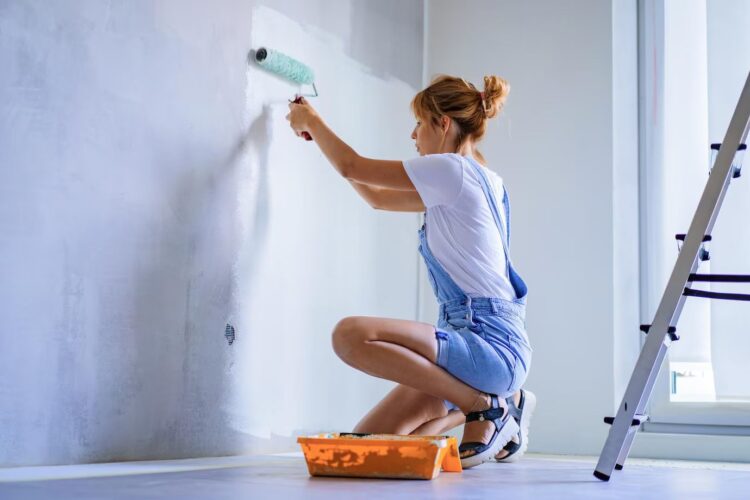
Source:freepik.com
- Ventilate the Area: Open windows and doors to avoid inhaling fumes.
- Use Painter’s Tape: Helps achieve clean edges and protects surfaces.
- Wear Gloves and a Mask: Prevents skin contact with chemicals and reduces inhalation of paint fumes.
- Fixing a Leaky Faucet
A dripping faucet can waste water and increase utility bills. To fix it safely:
- Turn Off the Water Supply: Prevents unexpected leaks while working.
- Use the Right Wrench: An adjustable wrench makes the job easier.
- Replace Old Washers: Worn-out washers are often the cause of leaks.
- Building a Backyard Fire Pit
A fire pit adds a cozy outdoor gathering space. Safety tips include:
- Choose a Safe Location: Place the fire pit at least 10 feet away from structures and flammable materials.
- Use Fire-Resistant Materials: Brick, stone, and metal are ideal choices.
- Keep a Fire Extinguisher Nearby: Be prepared in case of emergencies.
Final Thoughts
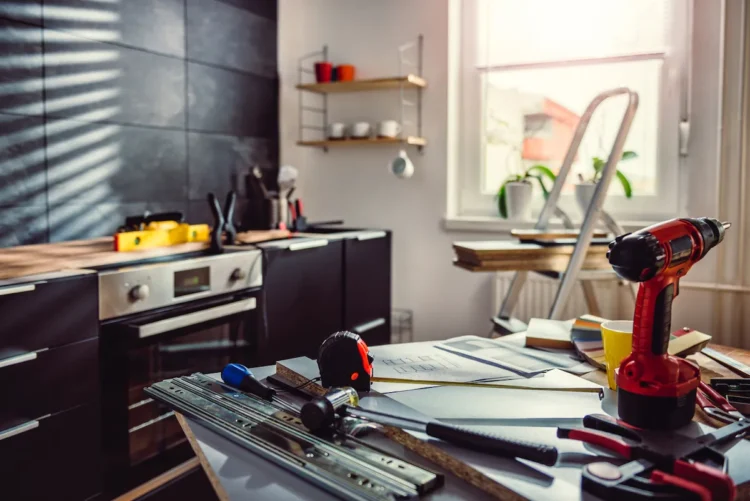
Source: bobvila.com
DIY projects around the house can be enjoyable and rewarding, but safety should always come first. By using the right protective gear, including prescription safety glasses online, and following best practices, you can ensure a successful and injury-free home improvement experience. Whether you’re a seasoned DIYer or just starting out, taking precautions will allow you to complete projects efficiently while keeping yourself and your home safe.

